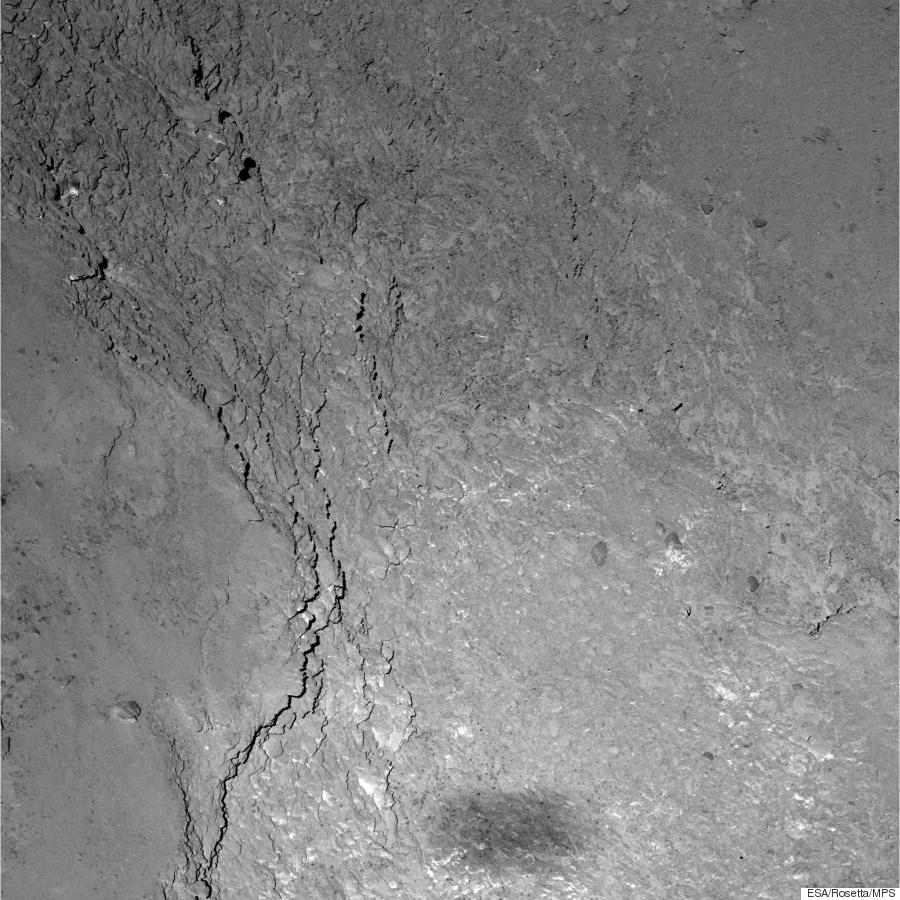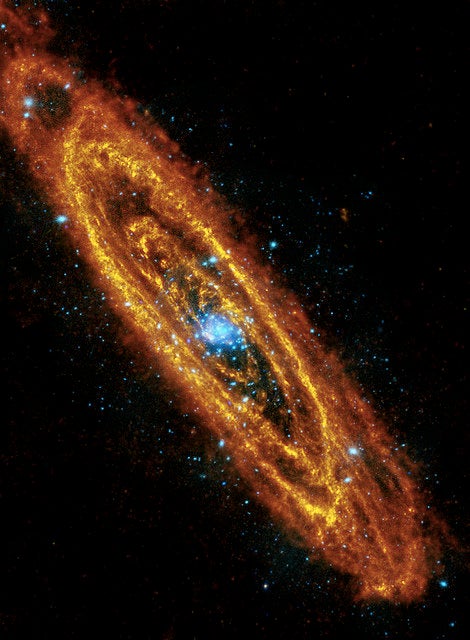Punxsutawney Phil wasn't the only one who saw his shadow last month.
Just 12 days after the groundhog ogled his umbra on Feb. 2, the European Space Agency's comet-hunting space probe, Rosetta, captured a photo of its shadow on Comet 67P.
(Story continues below image.)
Close-up view of a 228-by-228-meter region on Comet 67P/Churyumov-Gerasimenko, as seen by a camera aboard the Rosetta probe. The image was taken six kilometers above the comet’s surface. Rosetta’s fuzzy shadow is visible at the bottom of the image.
The photo, taken by the probe's OSIRIS camera, is being called the highest-resolution image yet taken of Comet 67P. OSIRIS actually consists of two independent camera systems operating in the visible, near-infrared and near-ultraviolet ranges. ESA released the image on March 3.
“Images taken from this viewpoint are of high scientific value,” Holger Sierks, OSIRIS principal investigator from the Max Planck Institute for Solar System Research in Göttingen, Germany, said in a written statement. “This kind of view is key for the study of [dust] grain sizes.”

The OSIRIS image (bottom left) shown in context with images taken by Rosetta's Navigation Camera reveal the exact location on the comet that was photographed. The probe was in direct alignment with the sun to cast a shadow.
Rosetta deployed its robotic lander Philae on Comet 67P on November 12, marking the first time a spacecraft had ever landed on a comet. Philae "fell asleep" a few days later after landing in a shady spot that caused the depletion of its solar-powered batteries. Scientists hope the probe will "wake up" some time in the next few months.
The Rosetta craft will remain near the comet through August, the nominal end of its mission.
